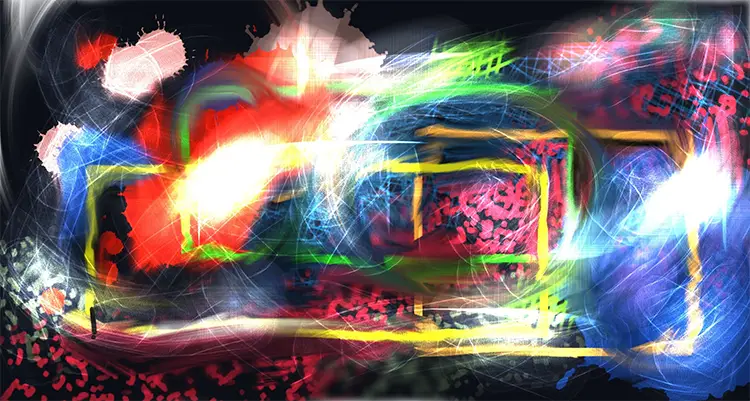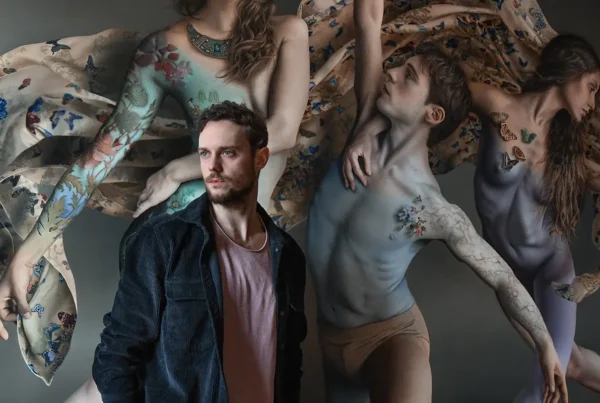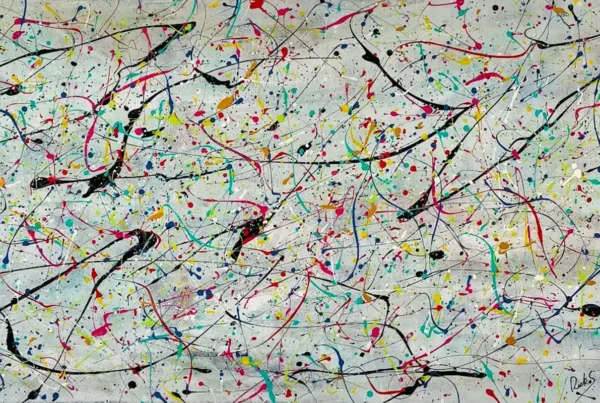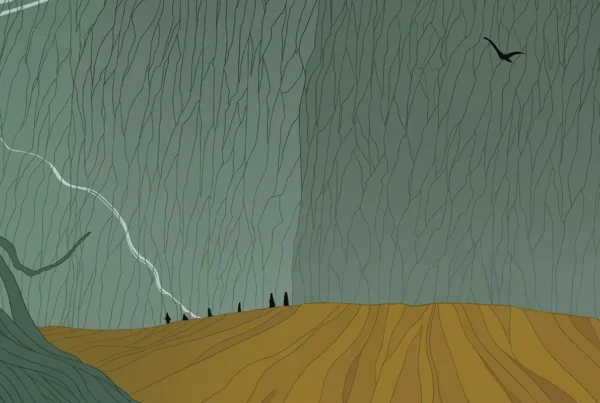“Each of my works is not just an image; it is a gateway to the mysterious universe, an invitation to detach from the real world and to a deep introspection into the infinitude of consciousness.”
A Cosmic Awakening: When Life, Death, and Art Collided
Albert Deak’s artistic journey began with an event so dramatic it reads like a prologue to a myth. At just six and a half years old, he suffered a near-fatal accident that profoundly reshaped his perception of life—and set the stage for his future as a visual artist. After being struck by a speeding vehicle, he spent two weeks in a coma. During recovery, he began to draw the scenes he remembered from the operating table with uncanny accuracy, including the people present and even the surgical instruments. These early sketches stunned medical professionals, not just for their technical precision, but for the strange perspective—as if seen from above. Deak had, unknowingly, entered the realm of near-death and out-of-body experience, and art became the medium through which he first processed it.
This dramatic event did not simply mark a turning point in his life; it created the psychological and emotional framework from which his art would later emerge. Drawing was no longer a pastime—it became a survival instinct, a language for expressing what could not be spoken. As Deak’s healing progressed, so did his dedication to capturing complex visions on paper, transforming them into increasingly elaborate representations. He recalls with clarity how drawing became an irresistible impulse, even leading to reprimands in school for sketching during lessons. Yet, he remained undeterred. His vision had already taken root, nurtured not only by trauma but by an evolving sense of inner purpose.
Encouraged by a perceptive teacher and supported by a chain of mentors, Deak eventually enrolled in a renowned art high school, overcoming personal and logistical hurdles. Admission into this elite program was hard-won, involving intense preparation and stiff competition. However, this victory marked the formal beginning of Deak’s lifelong commitment to art, one fueled by both resilience and a deep, almost metaphysical sense of calling. The accident that once threatened to silence him had instead opened a channel to a broader artistic consciousness—one that views creativity not merely as expression but as revelation.
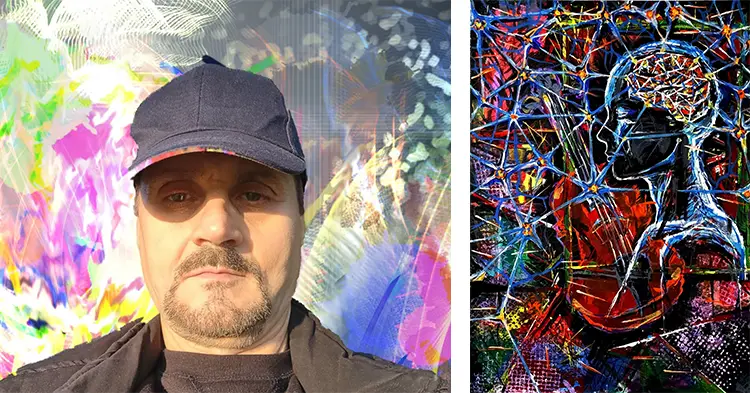
Albert Deak: Between Abstract Vision and Scientific Echo
Deak defines his artistic style as a fusion of abstract expressionism, figurative abstraction, and surrealist nuance. He explores ideas that lie at the intersection of emotional intuition and scientific theory, constructing visual experiences meant to provoke both wonder and reflection. His preferred themes—space-time, cosmic balance, the possibility of extraterrestrial intelligence—are not just aesthetic choices; they are philosophical propositions. Rather than attempting to illustrate science, Deak uses it as a springboard to forge new artistic languages, decoding speculative theories into dynamic visual narratives.
This conceptual ambition extends into both his canvas and digital works. While his traditional paintings emphasize tactile engagement, textures, and permanence, his digital pieces offer a boundless playground of possibilities. The two mediums do not compete; they enrich each other. Techniques discovered digitally often find their way onto canvas, and vice versa. His digital art allows for experimentation unburdened by material constraints, enabling rapid iteration and bold conceptual trials. Meanwhile, painting on canvas delivers the ritualistic depth and materiality that ground his practice in physical presence and tradition.
Deak’s hallmark lies in his ability to guide the viewer through layered compositions—visual terrains where chaos and structure coexist. His brushstrokes and digital gestures form intricate networks of color, often featuring vibrant chromatic tensions that reflect his belief in a universe built on dualities. These aren’t just compositions; they are invitations to introspect. In one of his most transformative works, Travelers from Other Worlds, Deak creates a visual philosophy rooted in cosmic ancestry and universal interconnectedness. The translucent central figure holding a glowing sphere of life becomes a surrogate for the human condition—both fragile and transcendent—set against a universe woven with unseen energetic forces. It was through this piece that Deak felt a spiritual reawakening, as though receiving a message from entities far beyond Earth’s realm.
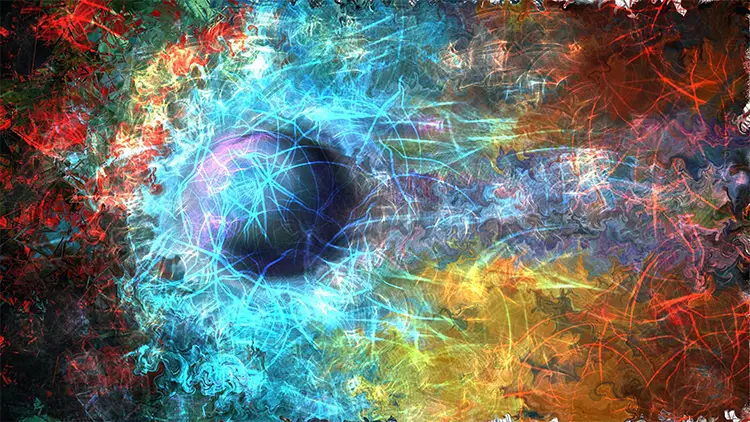
From Clay and Canvas to Digital Cosmos: An Artist of Limitless Tools
Albert Deak’s foundation in the visual arts is remarkably diverse, stretching from classical draftsmanship to ceramic design, and from political caricature to experimental digital forms. His initial training at the “Marin Sorescu” Art High School in Craiova grounded him in rigorous technique—drawing, volume studies, color theory, and composition—skills that would become cornerstones of his aesthetic grammar. Later, at the University of Art and Design in Cluj-Napoca, he pursued ceramics, mastering not only the art of porcelain but its scientific aspects: glaze chemistry, firing temperatures, and structural design. This unique duality of sensibility—artistic and technical—would become a defining characteristic of his creative practice.
Between 1987 and 1991, Deak worked as an industrial porcelain designer at ARPO S.A., a prominent porcelain manufacturer in Romania. There, he learned how to navigate the constraints and possibilities of mass production while still injecting originality into utilitarian objects. This period of professional formation was followed by the creation of Dragon Art SRL, his own entrepreneurial venture. The company, active through the 1990s, produced limited-edition and one-of-a-kind porcelain pieces. Deak not only designed and manufactured these works but also trained a new generation of ceramic artisans, bridging his personal creative vision with collective craftsmanship.
Now based in the United Kingdom, where he has been a resident for over 15 years, Deak creates all his current work from his UK-based studio. His practice is deeply embedded in the country’s creative landscape. He is an active member of both The British Art Club and the Visual Artists Association, affiliations that reflect his commitment to artistic dialogue within the UK’s vibrant art community.
In the years following his ceramic career, he expanded into graphic and web design, publishing, and—most notably—digital painting. His studio accommodates both traditional tools and digital equipment, including a Huion 24” graphics tablet and a powerful suite of creative software like Corel Painter, GIMP, and Affinity Designer. The coexistence of tactile and virtual environments fuels his experimental process. He might sketch an idea digitally, refine it on canvas, or vice versa. This fluidity, enabled by an unyielding curiosity, reflects his belief that artistic expression is not bound by medium but driven by the clarity of vision and the emotional truth behind it.
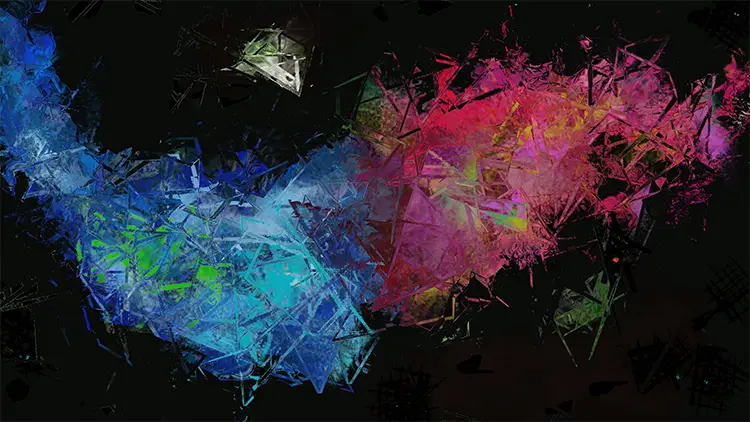
Albert Deak: The Universe as Canvas, the Artist as Conduit
The philosophical core of Deak’s practice lies in his conviction that art is not merely a product of human ingenuity, but a conduit for a higher, cosmic intelligence. He begins each creation in a meditative state, intentionally clearing his mind to become receptive to signals he perceives as emanating from beyond the physical world. This process, he believes, allows him to access ideas that align with the deep, often unseen patterns of the universe. He likens himself to an antenna, receiving transmissions from an astral wavelength—creative impulses that guide his brush or digital pen toward revelations rather than mere representations.
This worldview positions Deak within a lineage of artists such as Kandinsky, Pollock, and Richter—not as an imitator, but as a fellow seeker. Like Kandinsky, he experiences synesthetic connections between color, music, and form, often allowing sound or silence to dictate the emotional cadence of his compositions. From Pollock, he drew inspiration for gestural spontaneity and compositional dynamism, adapting the “all-over” technique into a network of multiple focal points that guide the viewer’s eye like a cosmic map. From Richter, he absorbed the importance of ambiguity and perception, though his own approach diverges toward optimism and forward-looking metaphysics.
Despite these resonances, Deak has carved an identity that is deeply singular. His work is not anchored in trauma or disillusionment, but in the celebration of existence and the pursuit of transcendence. In pieces like Travelers from Other Worlds, he proposes not just a new artistic vision, but a spiritual realignment—urging viewers to reassess their relationship to life, nature, and the cosmos. This sense of mission permeates his current ambition: to mount a major solo exhibition featuring 30 to 60 works from his new creative cycle. He envisions this future collection as a legacy project, a metaphysical statement intended not just for appreciation, but for transformation. For Deak, every stroke is more than color on surface—it is a whisper from the stars, urging humanity to remember its place in a much vaster, mysterious whole.
